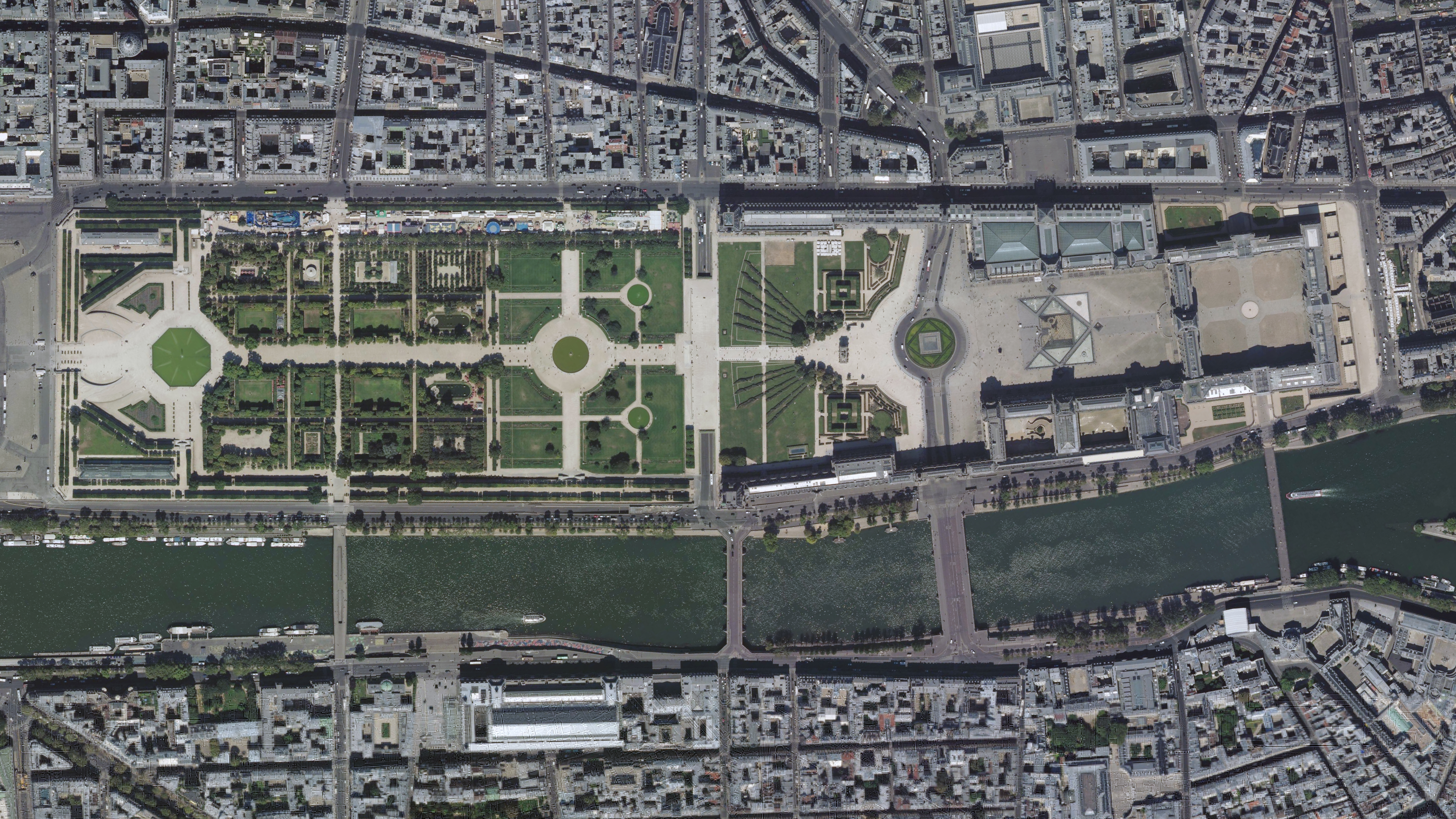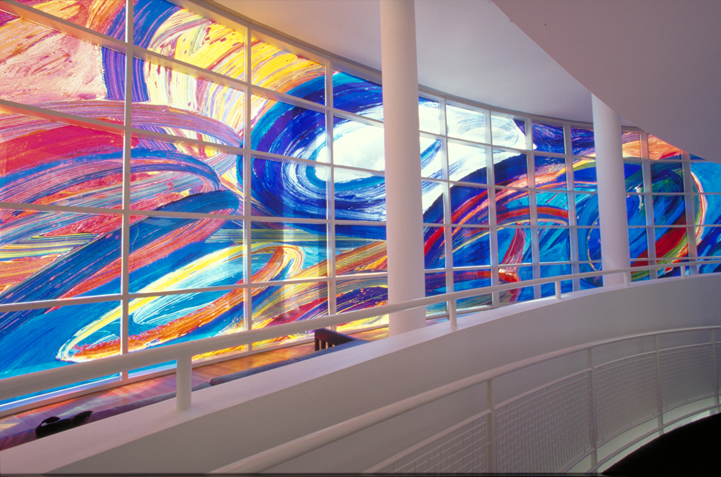|
Tommaso Del Mazza
Tommaso del Mazza, also known as the Master of Santa Verdiana, (active 1377–1392) was an Italian painter. Biography He trained in Florence, initially in the studio of Andrea Orcagna, but later with his brother Jacopo di Cione. He painted in typical Gothic art style, with gilded backgrounds. Among his known works are: *''Annunciation'' at the Getty Museum in California, likely originating from the Piccolomini Chapel at the Church of San Francesco, Pienza. *''Madonna and Child with Six Saints'' (1390) at the High Museum of Art in Atlanta, Georgia. *Series of Panels with ''Passion and Life & Coronation of Virgin'' Scenes (1365-1375) putatively from the Oratory of the Confraternity of Jesus and the Cross in Florence (''Confraternita di Gesu e della Croce'') [...More Info...] [...Related Items...] OR: [Wikipedia] [Google] [Baidu] |
Maestro Di Santa Verdiana, Incoronazione Della Vergine, 1380-1395 Ca
Maestro (; from the Italian '' maestro'' , meaning " master" or "teacher") is an honorific title of respect (plural: maestros or maestri). The term is most commonly used in the context of Western classical music and opera, in line with the ubiquitous use of Italian musical terms. In music The word ''maestro'' is most often used in addressing or referring to conductors. Less frequently, one might refer to respected composers, performers, impresarios, musicologists, and music teachers. In the world of Italian opera, the title is also used to designate a number of positions within the orchestra and company that have specific duties during rehearsal and performance. These include: * Maestro sostituto or maestro collaboratore: musicians who act as ''répétiteurs'' and assistant conductors during performances. * Maestro concertatore, the keyboard continuo player, who prepares singers and leads rehearsals. * Maestro direttore: the leader of the first violins of the orchestra ( ... [...More Info...] [...Related Items...] OR: [Wikipedia] [Google] [Baidu] |
Gothic Painters
Gothic or Gothics may refer to: People and languages *Goths or Gothic people, the ethnonym of a group of East Germanic tribes **Gothic language, an extinct East Germanic language spoken by the Goths ** Crimean Gothic, the Gothic language spoken by the Crimean Goths, also extinct **Gothic alphabet, one of the alphabets used to write the Gothic language ** Gothic (Unicode block), a collection of Unicode characters of the Gothic alphabet Art and architecture *Gothic art, a Medieval art movement *Gothic architecture *Gothic Revival architecture (Neo-Gothic) **Carpenter Gothic **Collegiate Gothic ** High Victorian Gothic Romanticism *Gothic fiction or Gothic Romanticism, a literary genre Entertainment * ''Gothic'' (film), a 1986 film by Ken Russell * ''Gothic'' (series), a video game series originally developed by Piranha Bytes Game Studios ** ''Gothic'' (video game), a 2001 video game developed by Piranha Bytes Game Studios Modern culture and lifestyle * Goth subculture, a music-c ... [...More Info...] [...Related Items...] OR: [Wikipedia] [Google] [Baidu] |
14th-century People Of The Republic Of Florence
As a means of recording the passage of time, the 14th century was a century lasting from 1 January 1301 ( MCCCI), to 31 December 1400 (MCD). It is estimated that the century witnessed the death of more than 45 million lives from political and natural disasters in both Europe and the Mongol Empire. West Africa experienced economic growth and prosperity. In Europe, the Black Death claimed 25 million lives wiping out one third of the European population while the Kingdom of England and the Kingdom of France fought in the protracted Hundred Years' War after the death of Charles IV, King of France led to a claim to the French throne by Edward III, King of England. This period is considered the height of chivalry and marks the beginning of strong separate identities for both England and France as well as the foundation of the Italian Renaissance and Ottoman Empire. In Asia, Tamerlane (Timur), established the Timurid Empire, history's third largest empire to have been ever establis ... [...More Info...] [...Related Items...] OR: [Wikipedia] [Google] [Baidu] |
Painters From Tuscany
Painting is the practice of applying paint, pigment, color or other medium to a solid surface (called the "matrix" or "support"). The medium is commonly applied to the base with a brush, but other implements, such as knives, sponges, and airbrushes, can be used. In art, the term ''painting ''describes both the act and the result of the action (the final work is called "a painting"). The support for paintings includes such surfaces as walls, paper, canvas, wood, glass, lacquer, pottery, leaf, copper and concrete, and the painting may incorporate multiple other materials, including sand, clay, paper, plaster, gold leaf, and even whole objects. Painting is an important form in the visual arts, bringing in elements such as drawing, composition, gesture (as in gestural painting), narration (as in narrative art), and abstraction (as in abstract art). Paintings can be naturalistic and representational (as in still life and landscape painting), photographic, abstract, narrative, sy ... [...More Info...] [...Related Items...] OR: [Wikipedia] [Google] [Baidu] |
Year Of Death Unknown
A year or annus is the orbital period of a planetary body, for example, the Earth, moving in its orbit around the Sun. Due to the Earth's axial tilt, the course of a year sees the passing of the seasons, marked by change in weather, the hours of daylight, and, consequently, vegetation and soil fertility. In temperate and subpolar regions around the planet, four seasons are generally recognized: spring, summer, autumn and winter. In tropical and subtropical regions, several geographical sectors do not present defined seasons; but in the seasonal tropics, the annual wet and dry seasons are recognized and tracked. A calendar year is an approximation of the number of days of the Earth's orbital period, as counted in a given calendar. The Gregorian calendar, or modern calendar, presents its calendar year to be either a common year of 365 days or a leap year of 366 days, as do the Julian calendars. For the Gregorian calendar, the average length of the calendar year ... [...More Info...] [...Related Items...] OR: [Wikipedia] [Google] [Baidu] |
Trecento Painters
The Trecento (, also , ; short for , "1300") refers to the 14th century in Italian cultural history. Period Art Commonly, the Trecento is considered to be the beginning of the Renaissance in art history. Painters of the Trecento included Giotto di Bondone, as well as painters of the Sienese School, which became the most important in Italy during the century, including Duccio di Buoninsegna, Simone Martini, Lippo Memmi, Ambrogio Lorenzetti and his brother Pietro. Important sculptors included two pupils of Giovanni Pisano: Arnolfo di Cambio and Tino di Camaino, and Bonino da Campione. Vernacular writing The Trecento was also famous as a time of heightened literary activity, with writers working in the vernacular instead of Latin. Dante, Petrarch and Boccaccio were the leading writers of the age. Dante produced his famous ''La divina commedia'' (The ''Divine Comedy''), now seen as a summation of the medieval worldview, and Petrarch wrote verse in a lyrical style influenced ... [...More Info...] [...Related Items...] OR: [Wikipedia] [Google] [Baidu] |
Louvre Museum
The Louvre ( ), or the Louvre Museum ( ), is the world's most-visited museum, and an historic landmark in Paris, France. It is the home of some of the best-known works of art, including the ''Mona Lisa'' and the ''Venus de Milo''. A central landmark of the city, it is located on the Right Bank of the Seine in the city's 1st arrondissement (district or ward). At any given point in time, approximately 38,000 objects from prehistory to the 21st century are being exhibited over an area of 72,735 square meters (782,910 square feet). Attendance in 2021 was 2.8 million due to the COVID-19 pandemic, up five percent from 2020, but far below pre-COVID attendance. Nonetheless, the Louvre still topped the list of most-visited art museums in the world in 2021."The Art Newspaper", 30 March 2021. The museum is housed in the Louvre Palace, originally built in the late 12th to 13th century under Philip II. Remnants of the Medieval Louvre fortress are visible in the basemen ... [...More Info...] [...Related Items...] OR: [Wikipedia] [Google] [Baidu] |
Florence
Florence ( ; it, Firenze ) is a city in Central Italy and the capital city of the Tuscany region. It is the most populated city in Tuscany, with 383,083 inhabitants in 2016, and over 1,520,000 in its metropolitan area.Bilancio demografico anno 2013, datISTAT/ref> Florence was a centre of medieval European trade and finance and one of the wealthiest cities of that era. It is considered by many academics to have been the birthplace of the Renaissance, becoming a major artistic, cultural, commercial, political, economic and financial center. During this time, Florence rose to a position of enormous influence in Italy, Europe, and beyond. Its turbulent political history includes periods of rule by the powerful Medici family and numerous religious and republican revolutions. From 1865 to 1871 the city served as the capital of the Kingdom of Italy (established in 1861). The Florentine dialect forms the base of Standard Italian and it became the language of culture throug ... [...More Info...] [...Related Items...] OR: [Wikipedia] [Google] [Baidu] |
High Museum Of Art
The High Museum of Art (colloquially the High) is the largest museum for visual art in the Southeastern United States. Located in Atlanta, Georgia (on Peachtree Street in Midtown, the city's arts district), the High is 312,000 square feet (28,985 m2) and a division of the Woodruff Arts Center. The High organizes and presents exhibitions of international and national significance alongside its comprehensive collection of more than 18,000 works of art, and is especially known for its 19th- and 20th-century American decorative arts, folk and self-taught art, modern and contemporary art, and photography. A cultural nexus of Atlanta since 1905, it hosts festivals, live performances, public conversations, independent art films, and educational programs year-round. It also features dedicated spaces for children of all ages and their caregivers, an on-site restaurant, and a museum store. In 2010, it had 509,000 visitors, 95th among world art museums. History The museum was fo ... [...More Info...] [...Related Items...] OR: [Wikipedia] [Google] [Baidu] |
Pienza
Pienza () is a town and ''comune'' in the province of Siena, Tuscany, in the historical region of Val d'Orcia. Situated between the towns of Montepulciano and Montalcino, it is considered the "touchstone of Renaissance urbanism". In 1996, UNESCO declared the town a World Heritage Site, and in 2004 the entire valley, the ''Val d'Orcia'', was included on the list of UNESCO's World Cultural Landscapes. History Before the village was renamed ''Pienza'' its name was ''Corsignano''. It is first mentioned in documents from the 9th century. Around 1300 parts of the village became property of the Piccolomini family. After Enghelberto d'Ugo Piccolomini had received the fief of Montertari in Val d'Orcia from the emperor Frederick II in 1220. In the 13th century Franciscans settled down in Corsignano. In 1405 Aeneas Silvius Piccolomini ( it, links=no, Enea Silvio Piccolomini) was born in Corsignano, a Renaissance humanist born into an exiled Sienese family, who later became Pope Pius ... [...More Info...] [...Related Items...] OR: [Wikipedia] [Google] [Baidu] |






